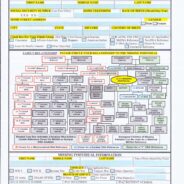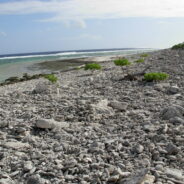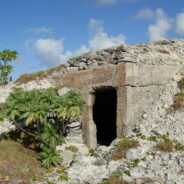Searching for Families
The JPAC Wake Island mission began three years ago with the discovery of a group of human remains on the north beach. The location of the discovery and determination that the remains were Caucasian pointed to the massacre of American civilian contractors on October 7, 1943. While JPAC’s forensic anthropologists have studied the remains in their lab at Hickam AFB in Hawaii, I have been pursuing the families of the 98 to find qualified donors for DNA reference samples. Family members submit DNA samples to the military Central Identification...
read moreNuclear Disarmament
Two weeks ago Wake Island’s nearest neighbor, the Republic of the Marshall Islands, filed suit in the international court at The Hague against nine global nuclear powers and in federal court against the United States. The lawsuits demand that these nations meet disarmament obligations established by international treaties. I looked into it at the time and watched for reactions and follow up in the coming days. Not surprisingly, it caused barely a ripple. The U. S. State Department asserted its dedication to achieving disarmament, and Russia...
read morePOWs
Like many of his generation, my father did not open up with the family about his wartime experiences. We knew he had been captured on Wake Island and spent the war in a Japanese prisoner of war camp, but little else. He had some mysterious, recurring illnesses and strange scars that we knew were related to that time, but I waited until long after his death to start asking questions. My quest to find out “what happened to Dad” turned into a full historical account of the Wake Island saga, but I won’t ever know what really happened to Ted Olson...
read morePeale
Of the three components that make up Wake Atoll, Peale is the “deserted island.” Inaccessible by road since the wooden bridge burned over a decade ago, Peale has quietly slipped into obscurity. Vines and brush have swallowed the vestiges of the Pan American complex and the contractors’ naval air base facility construction, much of it bombed to ruins in the war or left to the ravages of time and tide in the postwar years. The rusty hulk of the 8” Japanese gun and a concrete pillbox still face the empty sea near the point. Behind them, over a...
read moreJPAC Mission Update
Last week I made contact with the family of Henry Milton Dreyer, one of the Wake 98. Milton was twenty-five years old when he was killed on Wake Island in 1943. Two years earlier he had come to work on Wake with the medical team, assisting the civilian doctors as a surgical nurse. He had been on Oahu for at least a year before, working at the naval hospital at Ewa. Milton was the youngest of six siblings with four older brothers and one older sister. It must have been a sad day when this Iowa family learned of Milton’s tragic death during the...
read moreGuamanians on Wake
The Guamanian memorial stands proudly in Memorial Row on Wake Island. The delicately engraved plaque has been obscured by a well-intentioned but misguided attempt to mitigate weathering by applying a protective coating. One has to squint and shift a bit until the light hits it just right to make out the names. Context is not offered: the casual observer might wonder who they were and how they fit in to the saga of World War II on Wake Island. The Guamanians, or Chamorros, were employees of Pan American Airways. In 1935 the airline obtained...
read moreSubject to Change
A few weeks ago I heard a Radio Lab podcast about coral that got me to thinking about time and change (“The Times They Are a-Changin’”) Scientists dissecting coral shells find gray bands similar to tree rings that represent annual growth stages. Under water, coral grows an external skeleton in time with the cycles of light, temperature, and tides. In a living coral, the space between the annual growth bands contains faint lines that number about 365, each line representing a day in a year. Paleontologists examining fossilized coral from 350...
read moreWake’s War Ruins
On September 4, 1945, aboard the USS Levy, Rear Adm. Shigematsu Sakaibara surrendered Wake Island to Brig. Gen. L. H. M. Sanderson, USMC. Shortly after the surrender a landing party of marines took a small whaleboat to shore. Colonel Walter L. J. Bayler, the last American to leave the island freely in December 1941, was the first American to set foot on Wake in 1945. The sights that greeted the landing party and those who followed were astonishing. Photographers and correspondents, including Sgt. Ernie Harwell, accompanied the American...
read moreMass Grave
The term itself makes ones stomach drop. It conjures up dark historical memories of massacres and disasters, hurried group burials, and comingled corpses under mounds of cold dirt. The twentieth century alone bears witness to mass graves of millions: tragic reminders of man’s inhumanity to man. In recent days we have shuddered at the discovery of mass graves in civil war-torn regions of South Sudan and the Central African Republic. Mother Earth bears few mass graves with respect, but one of these surely lies in the National Memorial Cemetery...
read moreBrilliant Pebbles
While researching the postwar Wake era I came upon some interesting information about Wake Island’s role in missile defense programs over the years. Of the unclassified missions and operations that are open to public inquiry, the one called Brilliant Pebbles caught my attention. The oddly festive and evocative name seems reason enough to use it for a December blog post. Sadly, history has not recorded who in the Reagan Administration came up with “Brilliant Pebbles” to name the space-based anti-missile program known in its formative stages as...
read more







